Ctenanthe burle-marxii is certainly one of the more difficult plants to pronounce, but as far as Prayer Plants go, it’s actually one of the easier species to care for.
Thankfully, this plant also goes by the easier “Fishbone Prayer Plant” for its distinctive leaf patterns.
With beautifully ornate foliage and the same striking purple leaf undersides as the rest of its Marantaceae family, Ctenanthe (pronounced [ten-AN-thee]) are a great way to dip your toes in the Prayer Plant pool.
Sure, they can still be a touch high maintenance compared to your average foliage plant, but they don’t share the same fussy needs as some of their cousins.
I’m looking at you Calathea...
With its more relaxed personality and love of hydration, this plant can easily find itself at home in a terrarium. Find out how to make yours thrive!
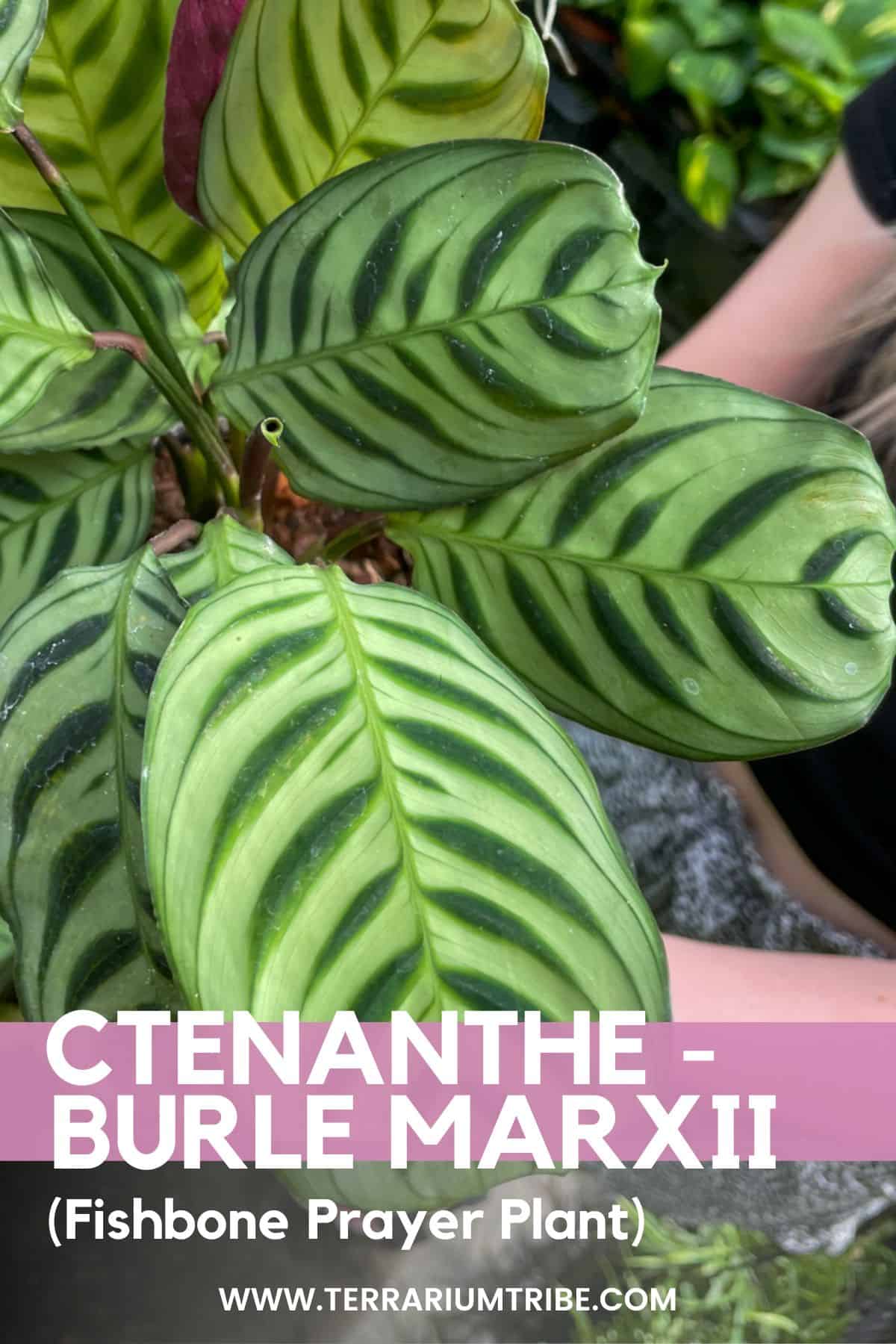
Where to Buy Ctenanthe burle-marxii (Fishbone Prayer Plant)
See the links below to purchase from reputable terrarium plant shops and marketplaces (may include affiliate links).
Fishbone Prayer Plant Care & Growth
| Plant Type | Foliage |
| Lighting | Bright to medium, indirect light |
| Temperature | 55-85°F (13-29°C) |
| Watering | High, even moisture |
| Humidity | Moderate to high humidity (50-80%) |
| Growth | 4-12 inches |
Lighting
Prayer Plants are famously responsive to lighting – it’s their “thing,” and we love them for it.
They’ll clearly tell you when they’re getting too much light by curling their leaves inward from the sides to protect themselves. It’s more so about protecting their thin green leaves against moisture loss, but they can be scorched by direct light, too.
Place this plant somewhere with medium or bright indirect light conditions, either diffused by a sheer curtain or out of the path of the sun’s harsh rays.
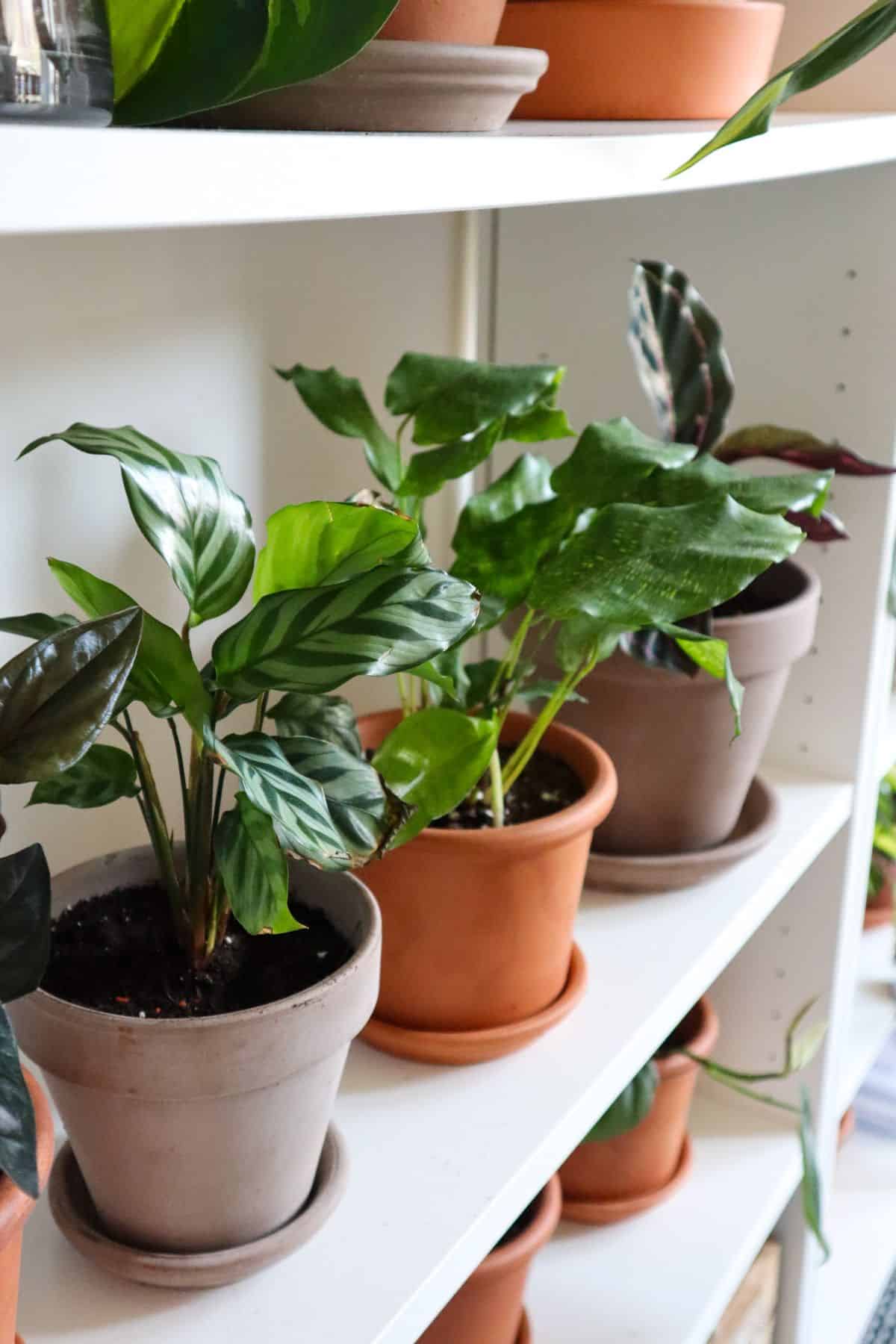
Watering
As always, there’s a delicate balance to be found when watering Prayer Plants.
They love consistent moisture and can be prone to drying out, but the roots of Ctenanthe burle-marxii are also susceptible to root rot. So take care to not completely saturate the substrate when you’re watering it.
Consistent, even moisture is the name of the game here. It should feel slightly damp to the touch but never sopping wet.
Having a drainage hole in your pot is essential here so that excess water has somewhere to escape. And in a terrarium, a false bottom can be used to achieve a similar effect.
Oh, and try to use distilled/deionized water too. Ctenanthe burle-marxii is particularly sensitive to the salts found in tap water (if your leaf edges are withering, this could be the cause).
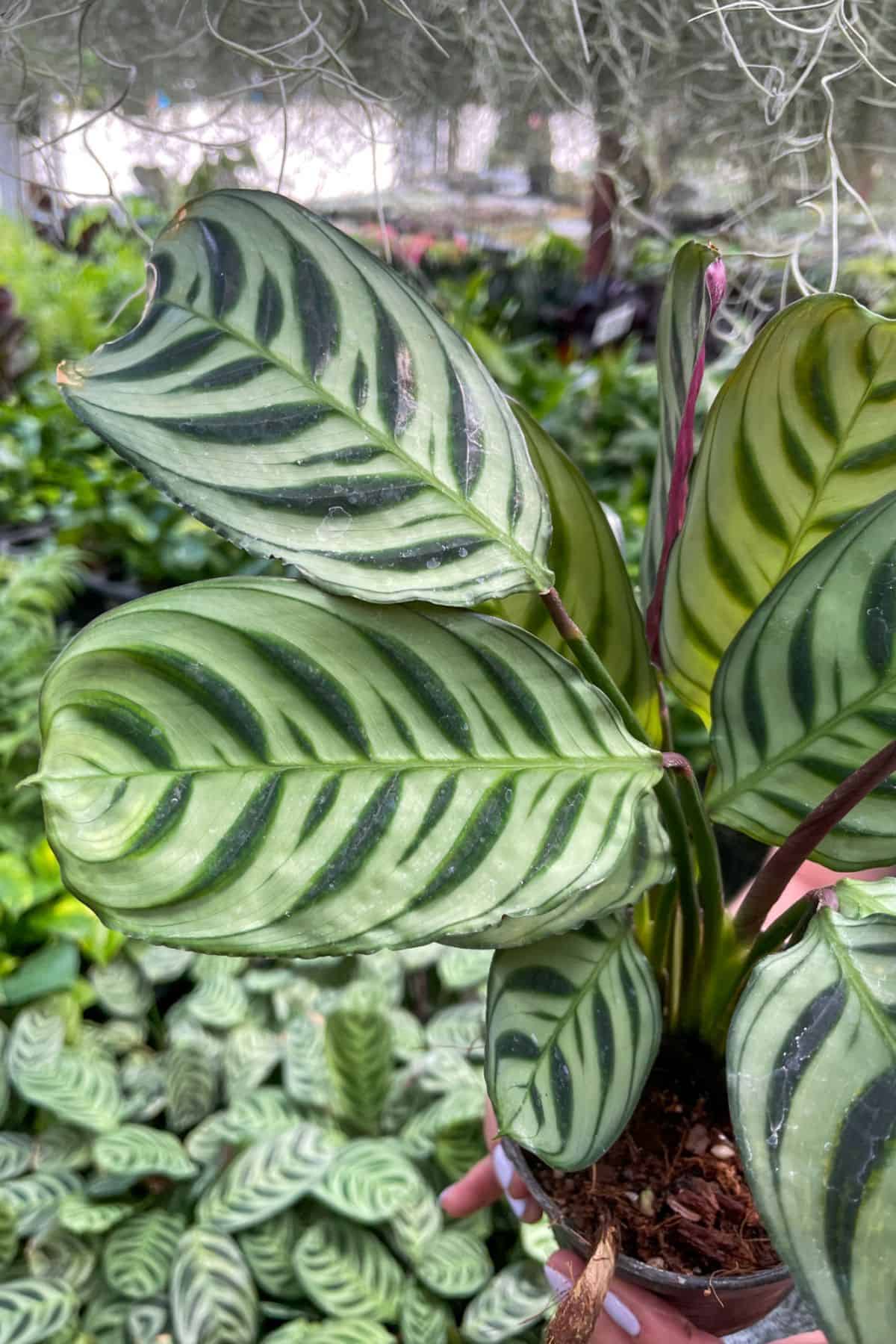
Substrate / Soil
The high moisture needs of Ctenanthe burle-marxii plants can be met with a water-retentive substrate.
A tropical mix that effectively balances water retention and drainage is your best bet.
Any solid terrarium mix should do exactly the same thing. Look for a coco coir base with plenty of aeration elements like orchid bark or pumice.
👉 Our tropical substrate mix has all of the above.
In a pot, vermiculite could also be used effectively here to boost the amount of available moisture in the substrate without holding it against the roots.
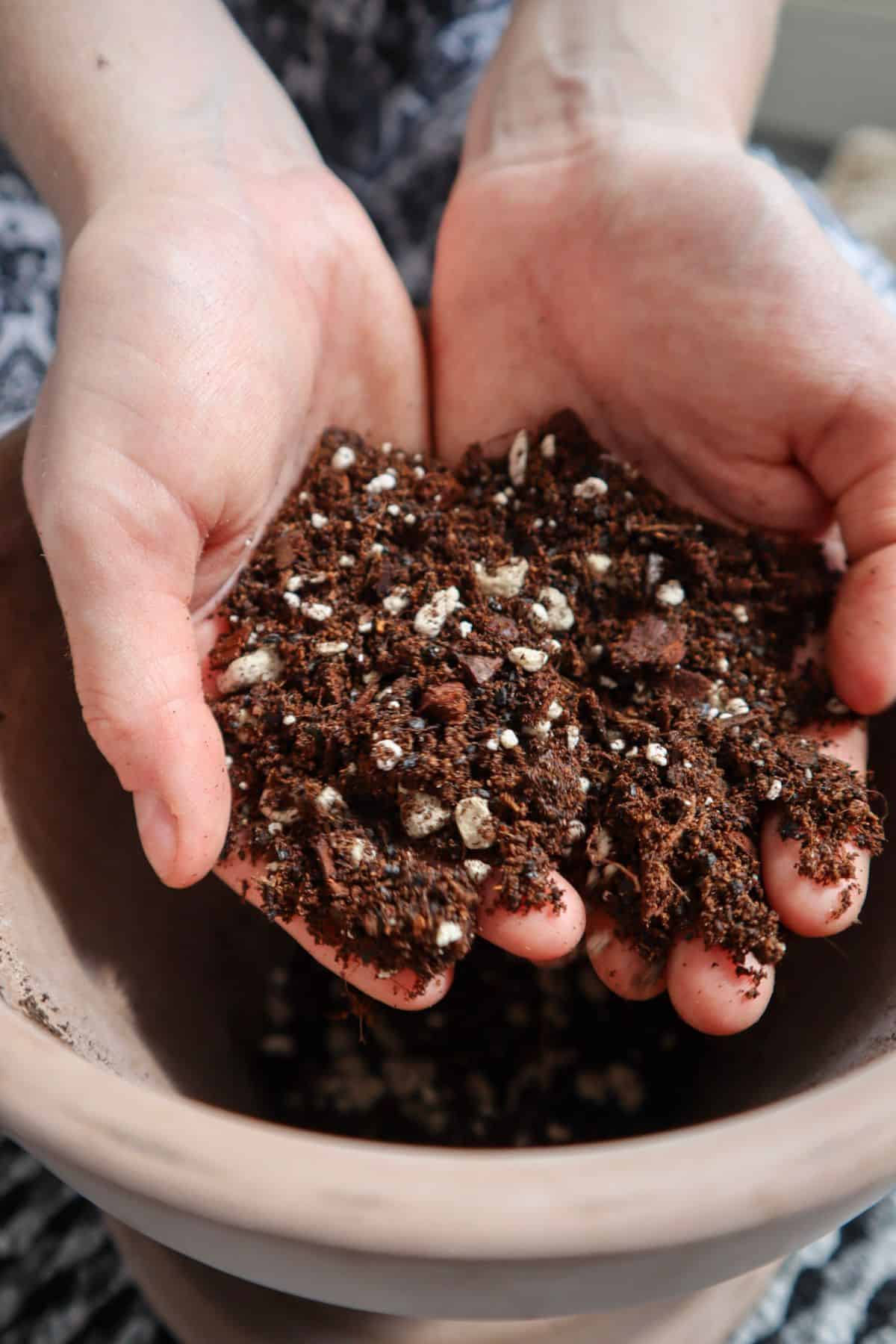
Temperature & Humidity
Originally from the tropical, humid jungles of Brazil, this plant evolved to live in constantly warm and humid environments.
The Fishbone Prayer Plant has some leeway. with temperature, but humidity really is a deal-breaker.
That’s why they do so well in closed terrariums with other humidity and moisture-loving tropical plants. Plants boost the humidity levels and the container traps it – easy!
Outside of terrariums, I don’t recommend misting daily as the humidity effects are negligible (and who has time for that anyway?).
Instead, look to raise the humidity of the room by placing a water source nearby, e.g. watering cans, pebble trays, etc.
Growth
The Ctenanthe burle-marxii is a fantastic candidate for terrarium life because its growth is more compact and bush-like as it matures.
Naturally, it’s also a good fit for smaller places in the home too.
That said, these plants can get reasonably big given enough time (typically 12 inches or so, but they can get bigger under the right conditions), so they will still outgrow small containers eventually.
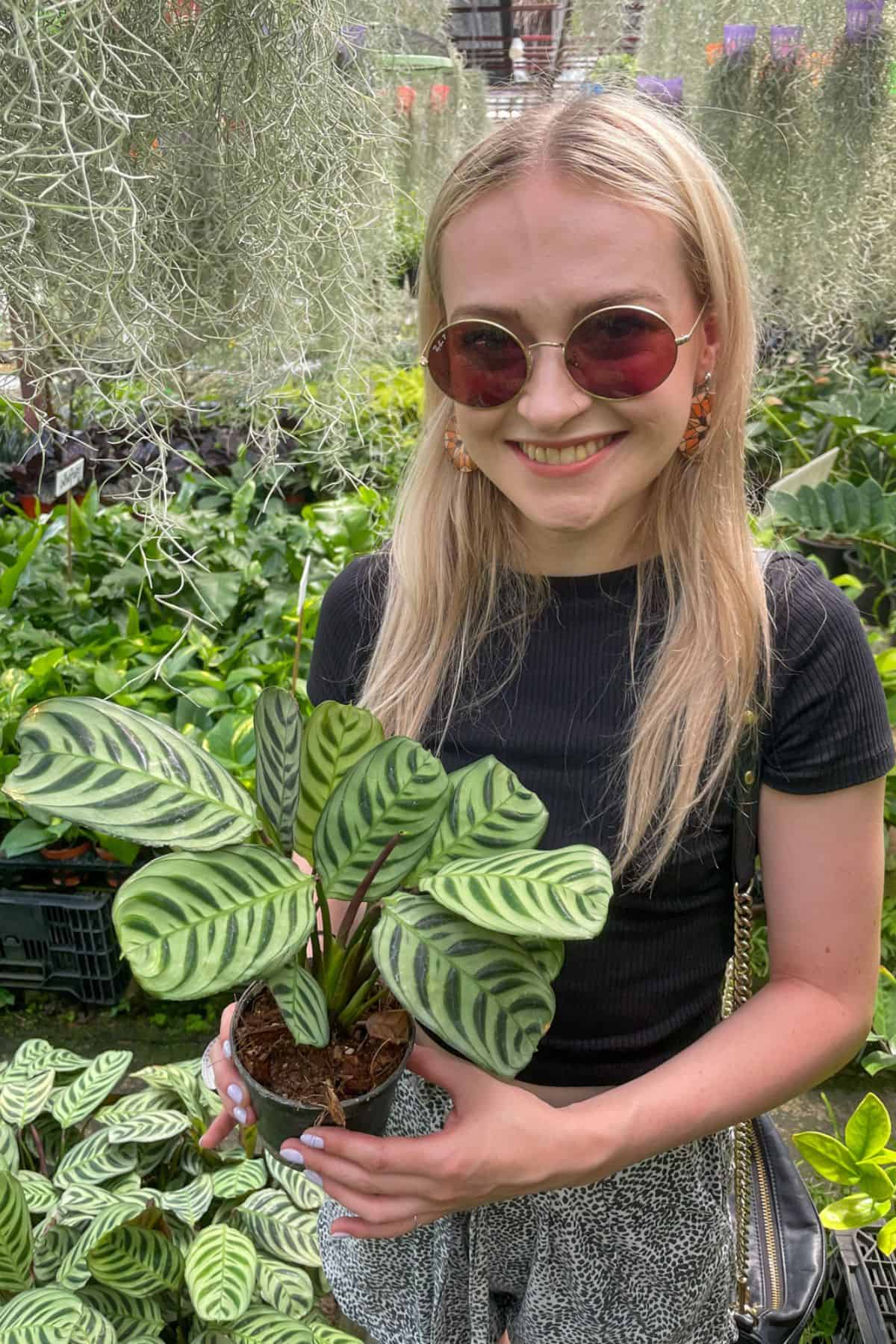
If you can really keep your plant happy, you may even see tiny bunches of yellow or white flowers!
Propagation
Propagating the Fishbone Prayer Plant can be tricky because it’s done by root division.
You’ll need a suitably mature plant to begin with, and from there, you can remove it from its home and expose the rhizomes/roots.
Here you should be able to identify where the rhizomes and roots cluster together. These will be the best places to cut around to create new plants.
Try to make sure each cluster has a healthy chunk of rhizome and a couple of leaves so they all have a good chance of making it on their own.
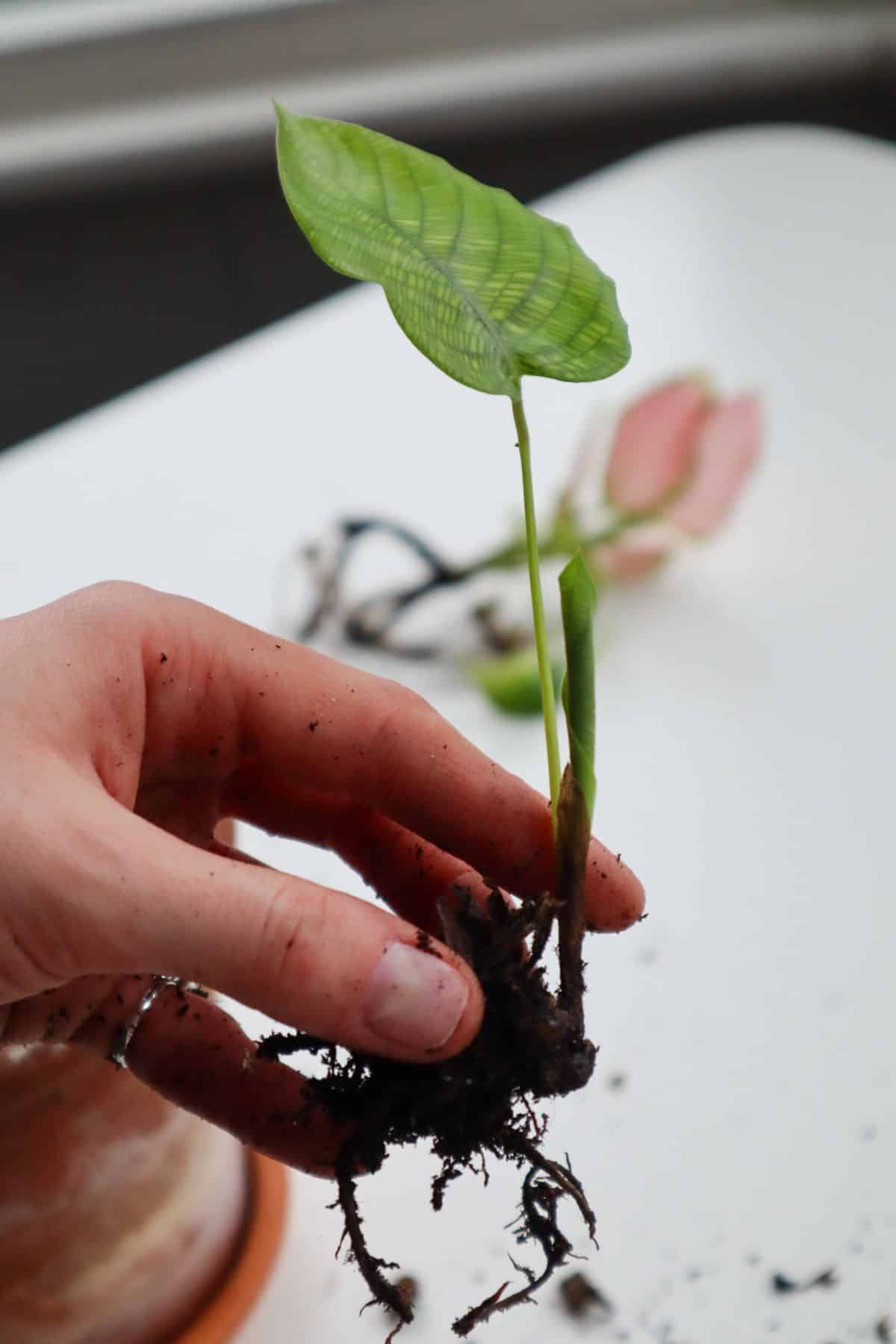
While this process can require more skill and understanding, these propagated plants can go straight into a new pot or terrarium rather than a temporary propagation station.
Varieties & Similar Plants
Seeing as the Ctenanthe burle-marxii is part of the Prayer Plant family, it’s often confused for any number of Maranta or Calathea.
The nickname “Calathea Fishbone” isn’t helping its cause much either…
While the Fishbone Prayer Plant’s leaves tend to be more oblong, it is still often confused for the Maranta leuconeura or the (extremely similar looking) Calathea Compact Star.
Problems and Toxicity
Thankfully, Ctenanthe burle-marxii are considered to be non-toxic, so they’re a good choice to have around the home.
However, they can be a target for plant pests looking to reach their tender leaves.
Spider mites are the most likely pest issue here, but mealybugs and thrips can still make an appearance, too. The best defense is a good offense here, and both neem oil and soapy water can go a long way.
Or, just pop them in a closed terrarium for extra protection!
